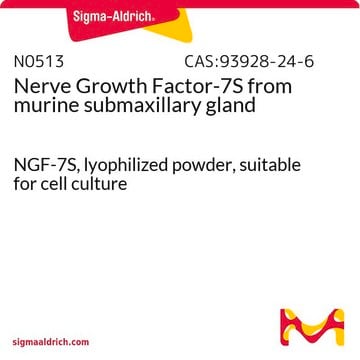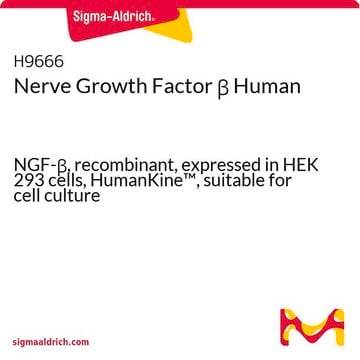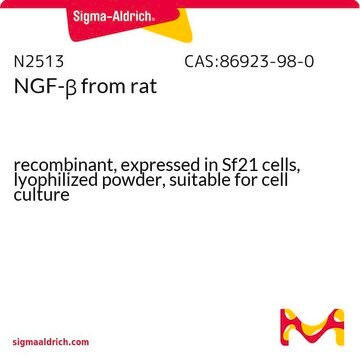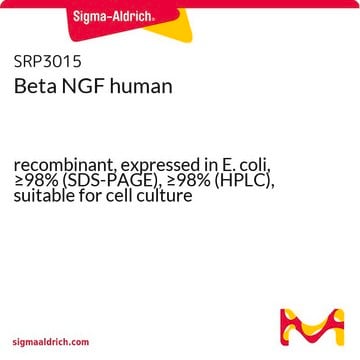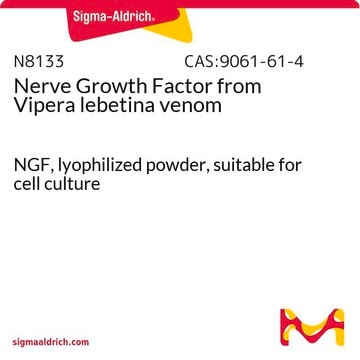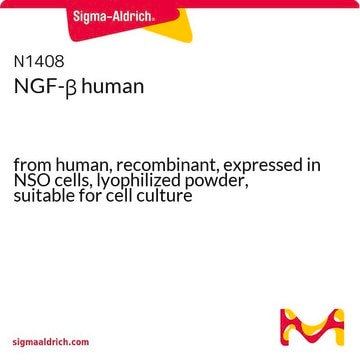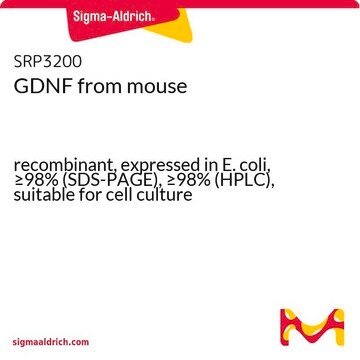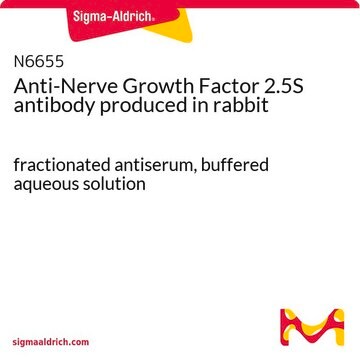N6009
Nerve Growth Factor-2.5S from murine submaxillary gland
NGF-2.5S, lyophilized powder, suitable for cell culture
Synonyme(s) :
NGF-2.5S
About This Item
Produits recommandés
Source biologique
mouse
Niveau de qualité
Forme
lyophilized powder
Puissance
0.1-30 ng/mL EC50 (using PC-12 cells)
Poids mol.
26.5 kDa
Conditionnement
pkg of 4X25 μg
Conditions de stockage
avoid repeated freeze/thaw cycles
Technique(s)
cell culture | mammalian: suitable
Numéro d'accès UniProt
Conditions d'expédition
dry ice
Température de stockage
−20°C
Informations sur le gène
mouse ... Ngf(18049)
Catégories apparentées
Description générale
Application
- in Ham′s F-12 medium for performing growth cone collapse assay using dorsal root ganglions (DRGs)
- as a media supplement in the “process compartment” for microfluidic chamber studies
- to treat mid-luteal cells to study its effect on choline acetyltransferase (CHAT) expression
Actions biochimiques/physiologiques
Autres remarques
Forme physique
Remarque sur l'analyse
Code de la classe de stockage
11 - Combustible Solids
Classe de danger pour l'eau (WGK)
WGK 3
Point d'éclair (°F)
Not applicable
Point d'éclair (°C)
Not applicable
Équipement de protection individuelle
Eyeshields, Gloves, type N95 (US)
Certificats d'analyse (COA)
Recherchez un Certificats d'analyse (COA) en saisissant le numéro de lot du produit. Les numéros de lot figurent sur l'étiquette du produit après les mots "Lot" ou "Batch".
Déjà en possession de ce produit ?
Retrouvez la documentation relative aux produits que vous avez récemment achetés dans la Bibliothèque de documents.
Notre équipe de scientifiques dispose d'une expérience dans tous les secteurs de la recherche, notamment en sciences de la vie, science des matériaux, synthèse chimique, chromatographie, analyse et dans de nombreux autres domaines..
Contacter notre Service technique